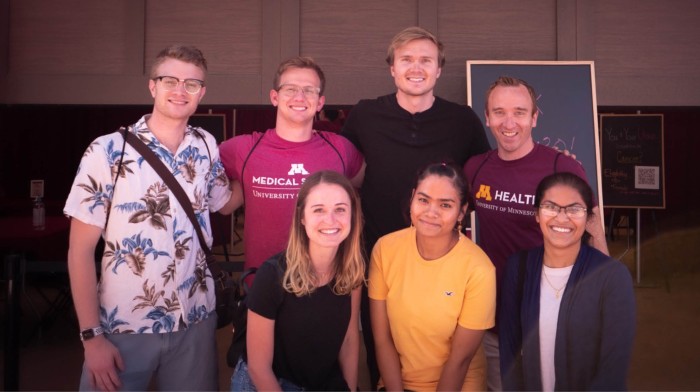
If you’re walking around the Minnesota State Fair this year, you might see many people eating a fried Oreo on their way to the big yellow slide, one of whom could be Robert McGovern, MD, a M Physicians neurosurgeon and researcher.
While he enjoys taking his family on the big slide, though, this year Dr. McGovern will probably be on his way to the University of Minnesota Driven to Discover building, where he’s hoping fairgoers can help him and his team in their work to better understand balance in patients with Parkinson's Disease and other movement disorders.
“We started this study at the fair last year,” Dr. McGovern says, “And we’re excited to be back connecting with people and gathering more data to help us find treatments for these conditions.”
How fairgoers can help
The study Dr. McGovern and his team are leading aims to help researchers better understand how people without a neurological condition or diagnosis move and balance differently than those who do.
“Contrary to what you’d think, it’s not a terribly well-studied area in terms of how people without these conditions move or balance,” Dr. McGovern explains, “So we’re hoping fairgoers who meet the criteria can help us collect that data to study and compare.”
Once they have anonymous data from enough participants, Dr. McGovern and his team will add it to a database of control data, which will help researchers identify and develop treatments that can target movement and balance-related areas of the brain impacted by Parkinson’s Disease and related movement disorders.
How it works at the fair
Dr. McGovern and his team will be at the fair in the Driven to Discover Building off of Cosgrove St. and Dan Patch Ave on several days:
- Aug. 28: 9 a.m. - 2 p.m.
- Sept. 1: 9 a.m. - 2 p.m.
- Sept. 3: 9 a.m. - 2 p.m.
- Sept. 4: 9 a.m. - 2 p.m.
“We have a couple of booths we use for this, and since we’re looking at balance and movement, we need the space for it,” Dr. McGovern explains.
“It’s really cool,” he says. “When we have someone who is interested, we create a digital avatar of them, and then we give them some sensors to wear on their arms and legs to help us track their movement and see it on the screen.”
The entire process takes 10-15 minutes from start to finish, and each participant begins by filling out a short survey to make sure they meet the criteria to be included.
Once they’ve confirmed that they’re eligible, “It’s kind of like a NASCAR crew with our team,” Dr. McGovern says. “Three to four med students and research staff members in my lab will attach the sensors to the participants’ arms and legs as quickly as they can so we can get as many people to participate in the time we have.”
Once everything is hooked up, participants will walk around to calibrate the software. When it’s ready to go, Dr. McGovern will have each person do a series of movement and balance exercises to begin collecting the data on how they move, and they’ll be able to see their avatar move around on a screen nearby.
“Last year we had about 150 people participate, and there were so many more who wanted to, but we didn’t have enough time. We have more students and researchers helping us at the booth this year, so we can hopefully get more people involved,” Dr. McGovern says.
To thank fairgoers for their help, Dr. McGovern and his team have a small gift for each of them too as they leave.
“We’re so grateful for the Minnesotans who are helping us conduct this research to help find a treatment for these conditions,” Dr. McGovern says. “For every step we collect data on, we’re one step closer to discovering a new treatment.”